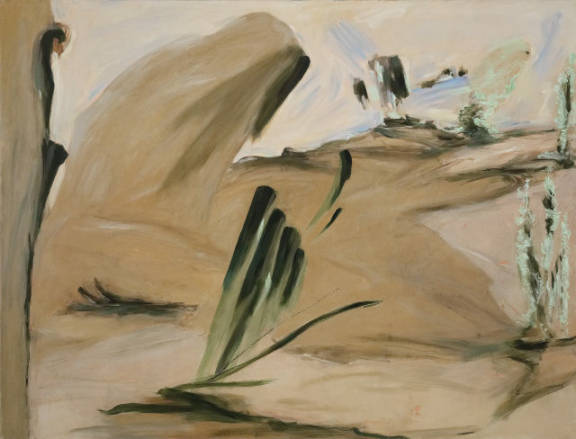
João Queiroz
S/ Título [Untitled]
Lisbon, Portugal, 1957
João Queiroz’s visual research is inseparable from his early philosophic interest in aesthetic theory and in the workings of language on the artistic and intellectual level, matters which he was particularly engaged with during his higher education in Philosophy at the University of Lisbon (1984). His initial artistic path was, however, quite erratic, going through a long process of self-discovery until the mid-1990s. This period is marked by a great dispersion of formal motifs, ranging from research on the dialogue between surface and the forms drawn into it – be they human figures, silhouettes, natural elements or dynamic objects – to the use of writing in order to explore the ways images are constructed, and to arouse reactions on the onlooker’s perception. Thus, he includes sentences in Portuguese or English, installing a tension between word and image or obvious contradictions between the written and the represented.
Common to all these works is a will to explore the extensive range of possibilities of artistic language – not through any conceptual detachment, but through the omnipotent and daily use of drawing as an exercise that helps the artist to clarify his visual work. Queiroz considers the afternoons spent in the Prado Museum copying classical works as central to his education, but so are other experimental practises which allowed him to feel the distance between the “eye” and the “hand”, as when he drew images from television with both hands, or when he set out to the countryside with a helmet in his head to limit his field of view. Queiroz takes art as something that goes beyond the confines of language, creating “new sensibilities” which surpass the idea of categories or the reduction of objects to names – that is why, after an artistic residence in the barren landscape of Feital, in Beira Alta (Portugal), in 1997, he decided to work one of the genres most saturated with codes and conventions in Western art history: the problem of landscape and its representation. João Queiroz thus freed himself from the more conceptual component of his earlier exercises, entirely abandoning the realm of words in order to dedicate himself exclusively to the world of visual phenomena.
This new direction in his work called for a peculiar working method that fuses three distinct artistic practices: first of all, drawing, directly from nature, as an experimental record of the bodily senses during his perambulation; the watercolour painting which, in its own fluidity, promptly dilutes the presence of the initial motif; and lastly, absorbing both these ways of thinking the image, the oil painting, created in the studio with yet more detachment from any referents. Instead of looking for a simulation of observed nature, Queiroz searches a synaesthesia of lived experience, using both drawn annotations and physical memory to recreate certain movements.
Since he never completely abandons nature itself, João Queiroz brings anti-naturalist representation to the frontier of abstraction without trespassing it. In his images of the last decade, there are almost always some immediately recognizable elements, such as brooks, trees or paths, despite the arabesques, smudges and indistinct shapes that reign over the compositions, avoiding any kind of exegesis or verbal translation that would transform them into a mere code system. Above all, his creative act strongly relies on the movement of his body and on his intuitive application of colour, granting such rhythm and intensity to his nostalgic and melancholic visual experiences that his landscapes appear to be suffused with neo-romanticism.
Afonso Ramos
February 2011